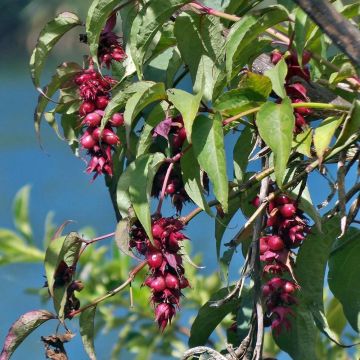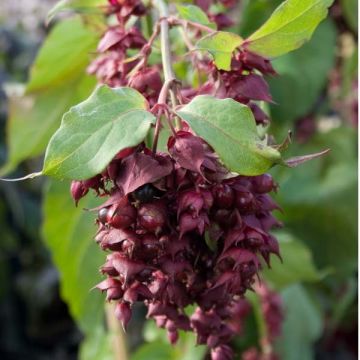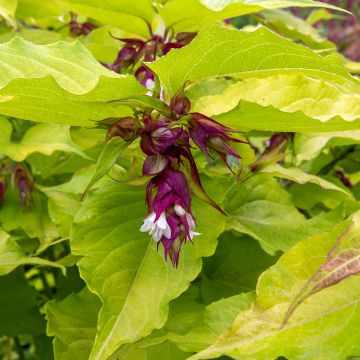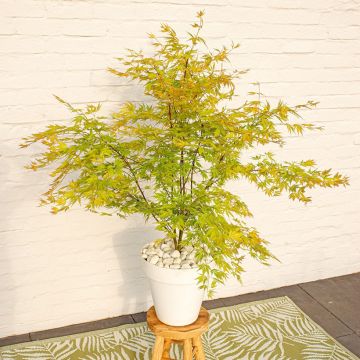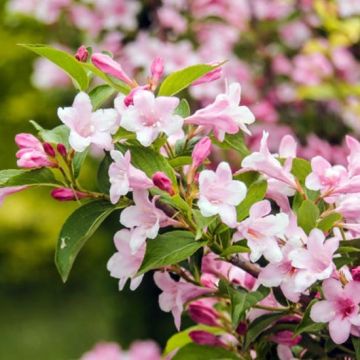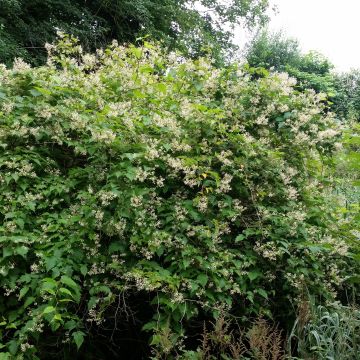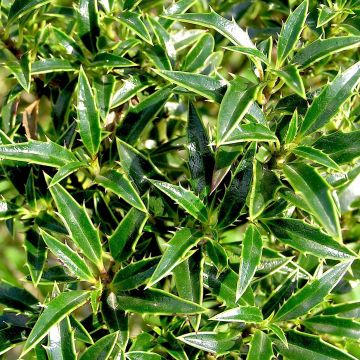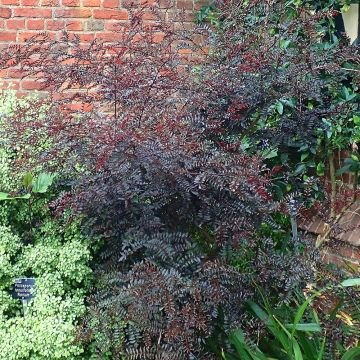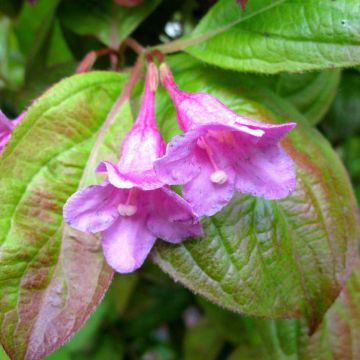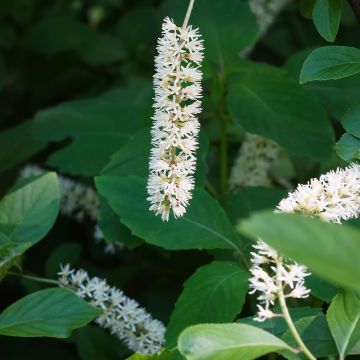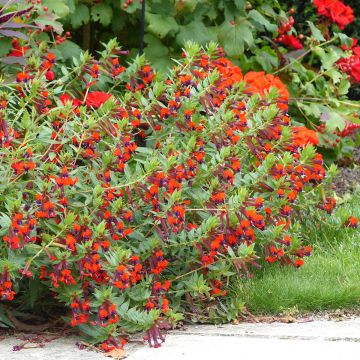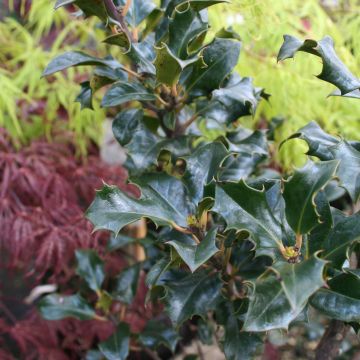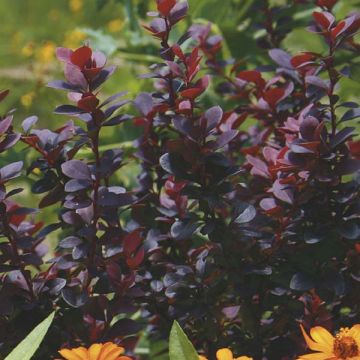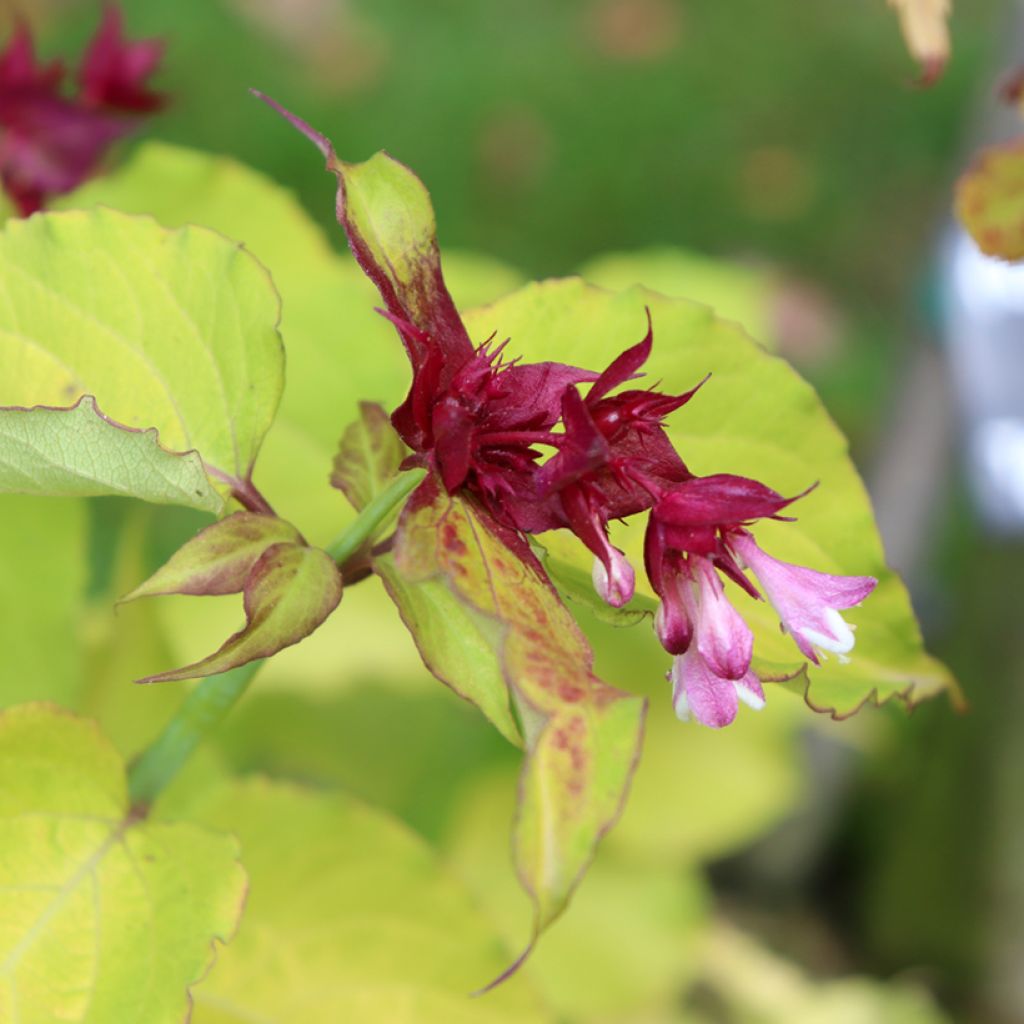

Leycesteria formosa Golden Lanterns
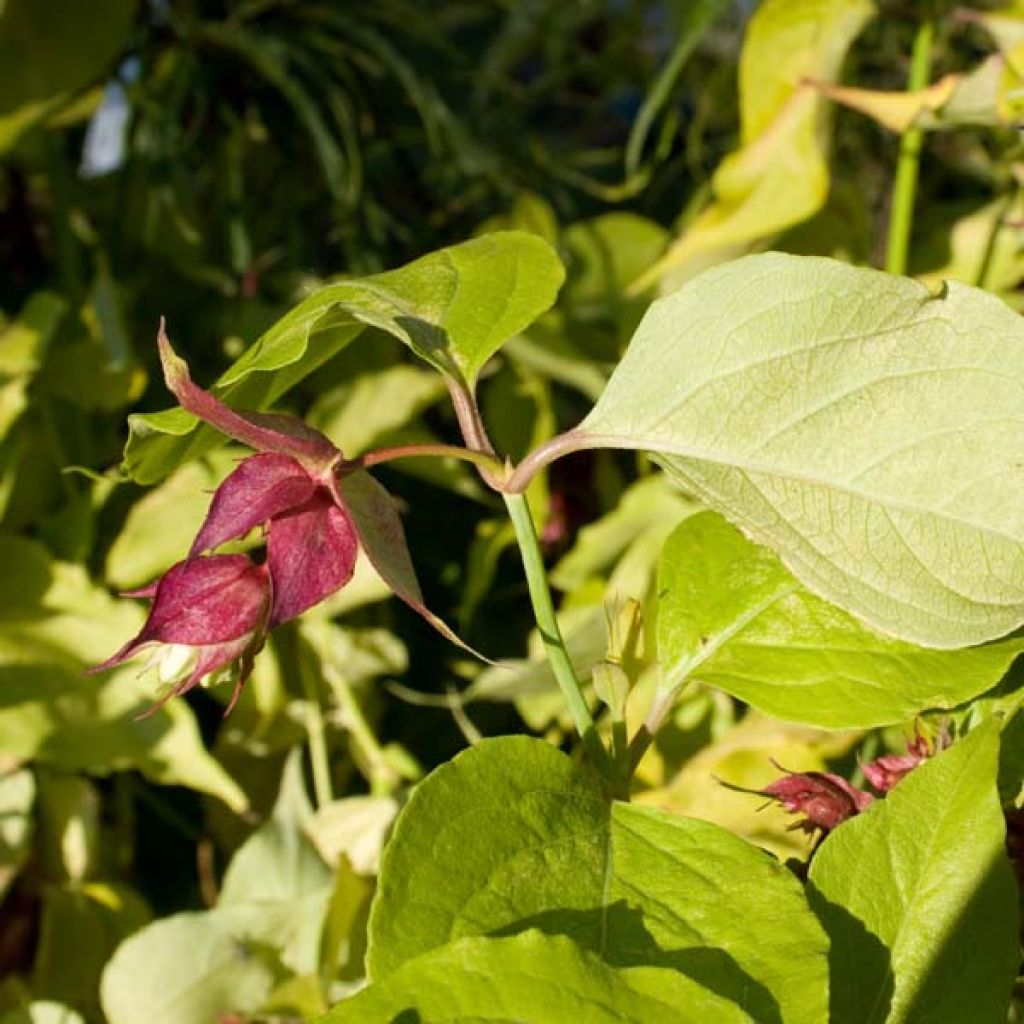

Leycesteria formosa Golden Lanterns
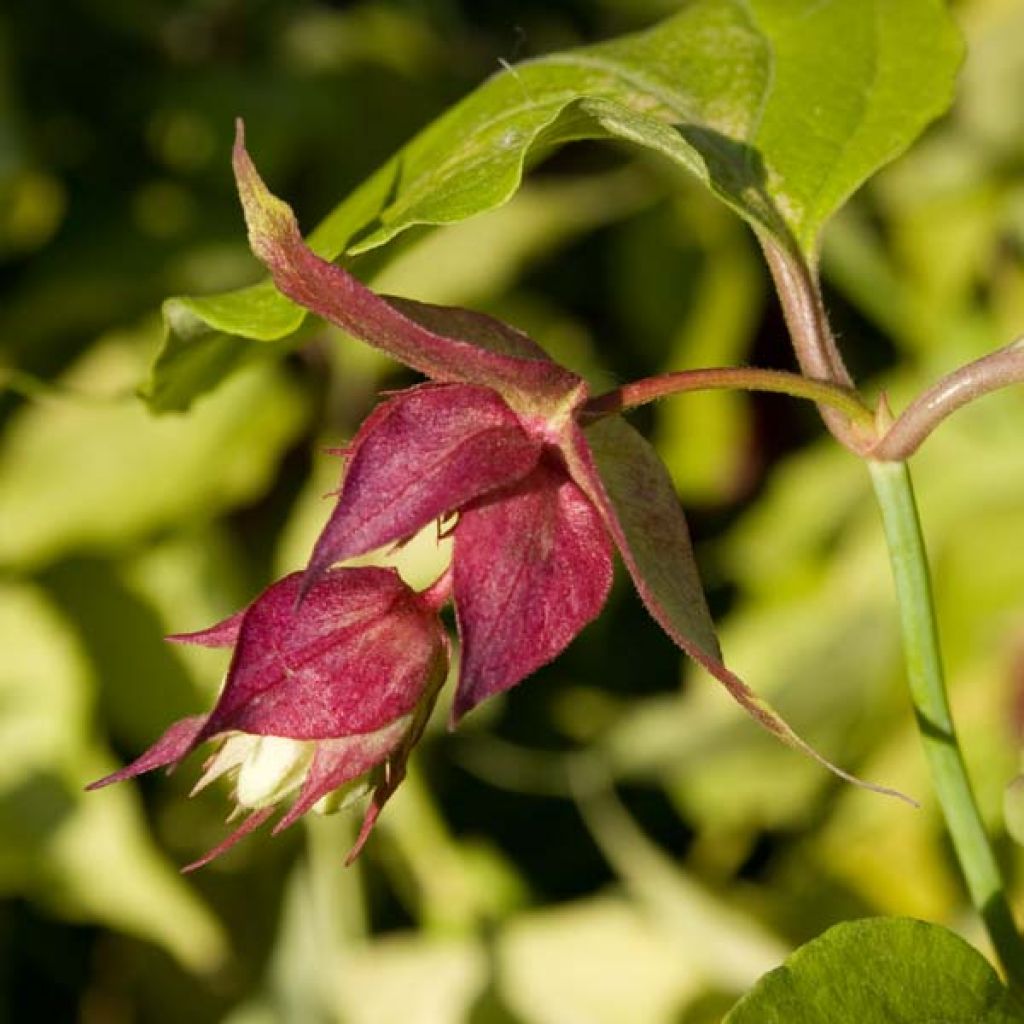

Leycesteria formosa Golden Lanterns
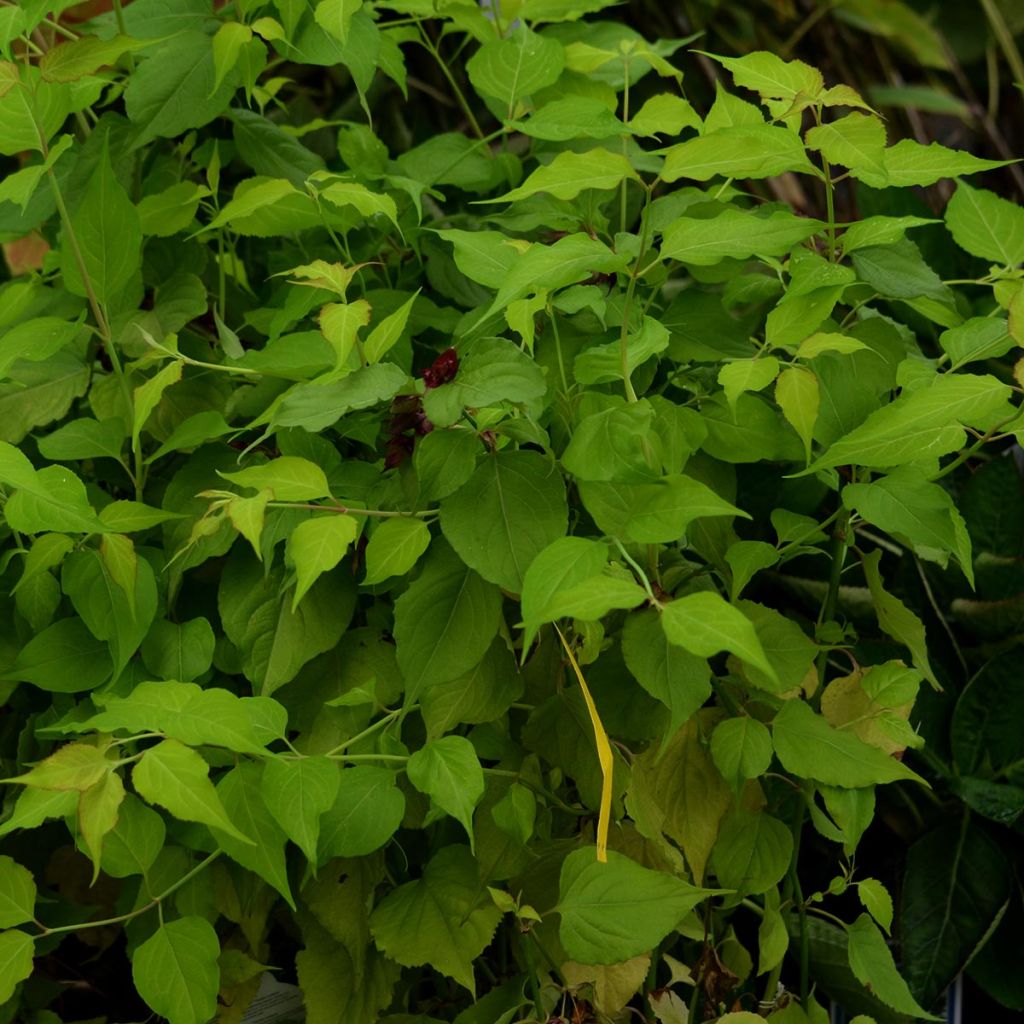

Leycesteria formosa Golden Lanterns
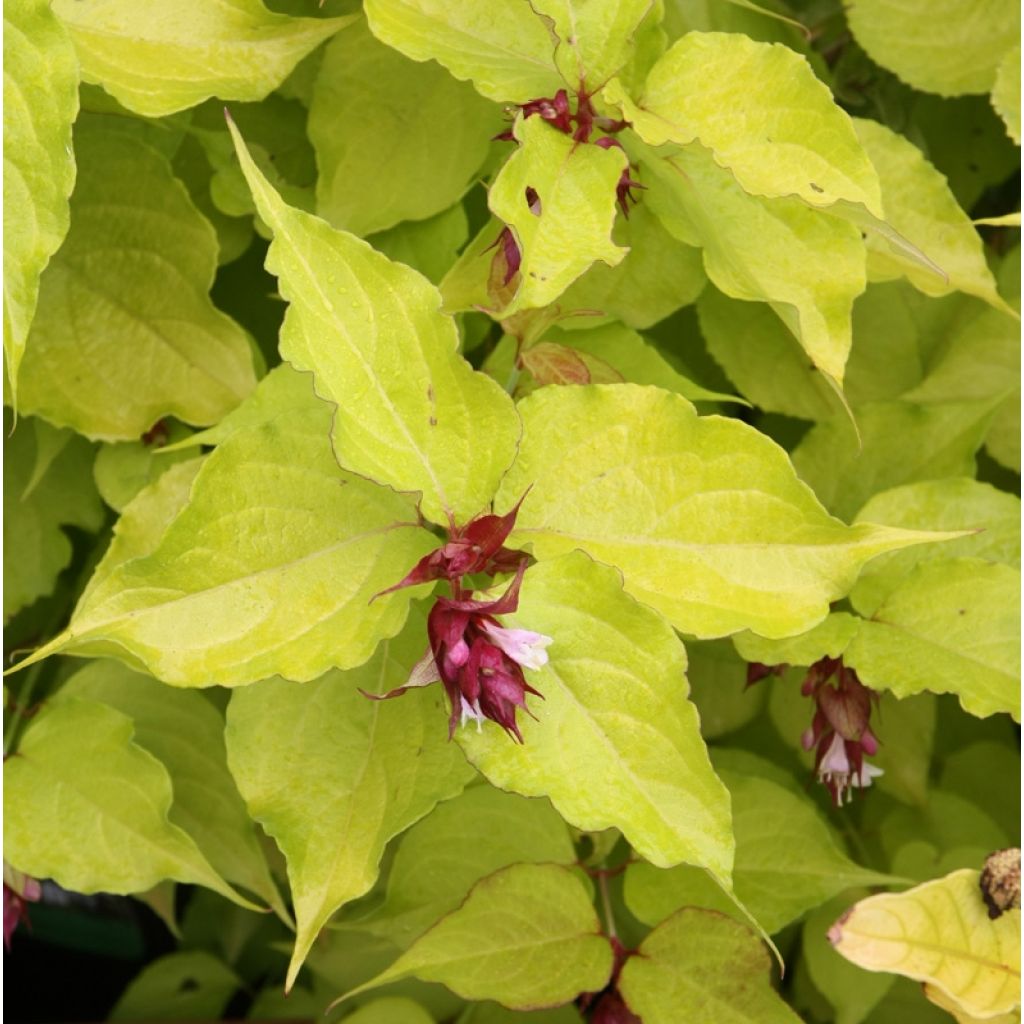

Leycesteria formosa Golden Lanterns
Leycesteria formosa Golden Lanterns
Leycesteria formosa Golden Lanterns
Himalayan Honeysuckle, Flowering Nutmeg, Pheasant Berry, Granny's Curls
Why not try an alternative variety in stock?
View all →This plant carries a 24 months recovery warranty
More information
We guarantee the quality of our plants for a full growing cycle, and will replace at our expense any plant that fails to recover under normal climatic and planting conditions.
From €5.90 for pickup delivery and €6.90 for home delivery
Express home delivery from €8.90.


Does this plant fit my garden?
Set up your Plantfit profile →
Description
The Leycesteria formosa ‘Golden Lanterns’ is a shrub with a vertical and bushy growth and a profuse flowering. It possesses all the attributes of the species type, but stands out with its wonderful golden foliage. From July to October, it seduces with its small white flowers borne on long dark red spike bracts. Later, the flowers are replaced by juicy purple berries which are a delight for birds.
The Leycesteria, also known as Pheasant's Tree or Himalayan Honeysuckle, is a bush of the Caprifoliaceae family. Originally from Asia, it owes its name to William Leycester, an English magistrate passionate about botany. It owes its nickname, as one might guess, to its great popularity among pheasants!
The ‘Golden Lanterns’ pheasant's tree is of medium size, and has a bushy habit. Its green branches rigid, hollow, and slightly arched at ripeness, give it an attractive appearance - even in winter when they are devoid of leaves. It has a fast growth, reaching 2m (6 ft 7 in) high by about 1.5m (4 ft 11 in) wide at maturity.
Flowering takes place in late summer and early autumn. The bush is covered with small white flowers surrounded by bracts of a rich and deep purple, giving the bush a somewhat exotic air. Its long and ovate leaves emerge tinted with coppery orange in spring, they become a beautiful chartreuse green during the summer contrasting wonderfully with the purple of the bracts. Its burgundy red fruits are spherical, shiny, they appear following flowering, from August to November. Often, the clusters simultaneously adorn themselves with berries at their base and flowers at their tip.
The Leycesteria is happy in the partial shade or non-burning sun, in all types of soil (preferably fertile and well-drained); robust, it resists diseases, pollution and seaside conditions. Pruning is not obligatory, but a short cutting back of the stems at the end of winter will allow your Leycesteria to start off even better (the flowers appear on the wood of the current year). The foliage colour of ‘Golden Lanterns’ varies according to its exposure to the sun: if the plant is too much in the shade, the foliage will be less bright.
Beware: the berries, although appetising, are quite indigestible ... better to leave them to the birds!
The Leycesteria formosa ‘Golden Lanterns’ will pair wonderfully with plants with purple foliage, such as the Japanese Barberry ‘Harlequin’ or the Sand Plum. It will find its place in a flowering hedge, at the heart of a bush collection or even isolated alongside white or light pink bush roses and Mexican Orange. Cultivation in a pot is also possible, but remember to bring it in during winter as it will be more vulnerable than in open ground.
Report an error about the product description
Leycesteria formosa Golden Lanterns in pictures
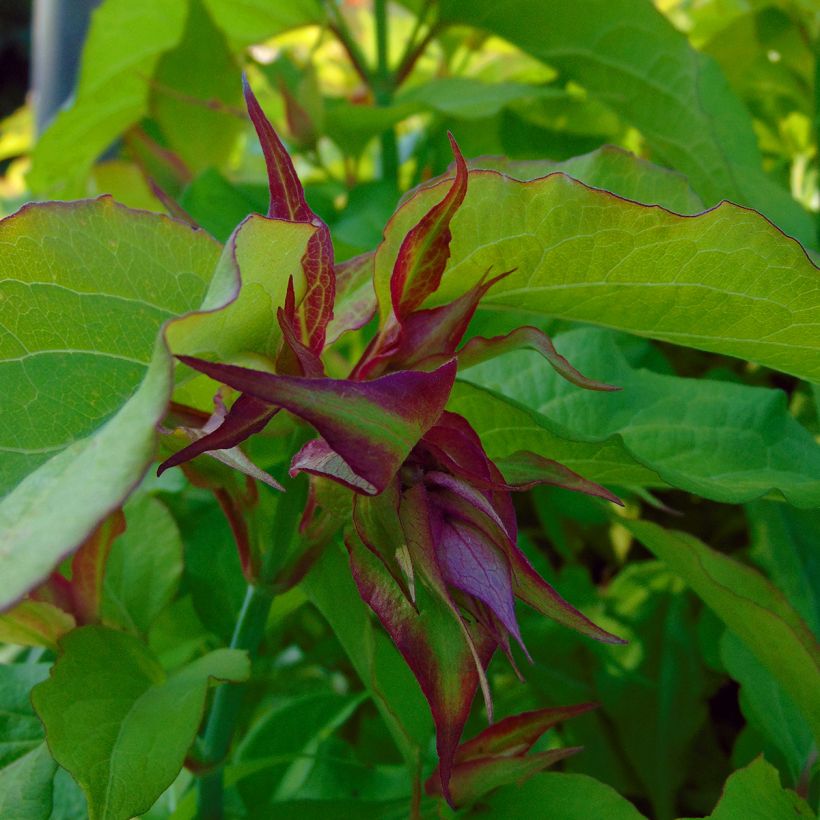

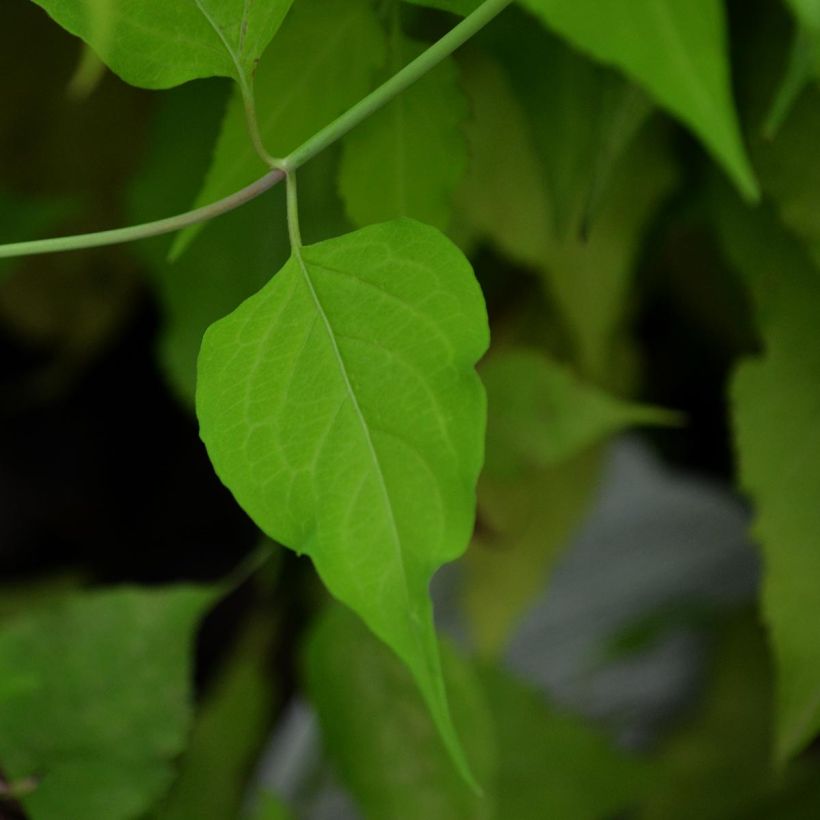

Plant habit
Flowering
Foliage
Botanical data
Leycesteria
formosa
Golden Lanterns
Caprifoliaceae
Himalayan Honeysuckle, Flowering Nutmeg, Pheasant Berry, Granny's Curls
Cultivar or hybrid
Other Leycesteria - Himalayan Honeysuckle
Planting and care
It enjoys shade and moist, humus-bearing soils. Originally from the Himalayas, it is very hardy (-20° (-4 °F)). It can happen that the foliage gets frostbitten. Prune the frostbitten stems, it will regrow even better from the stump.
Planting period
Intended location
Care
-
, onOrder confirmed
Reply from on Promesse de fleurs
Striking foliage shrubs
Haven't found what you were looking for?
Hardiness is the lowest winter temperature a plant can endure without suffering serious damage or even dying. However, hardiness is affected by location (a sheltered area, such as a patio), protection (winter cover) and soil type (hardiness is improved by well-drained soil).

Photo Sharing Terms & Conditions
In order to encourage gardeners to interact and share their experiences, Promesse de fleurs offers various media enabling content to be uploaded onto its Site - in particular via the ‘Photo sharing’ module.
The User agrees to refrain from:
- Posting any content that is illegal, prejudicial, insulting, racist, inciteful to hatred, revisionist, contrary to public decency, that infringes on privacy or on the privacy rights of third parties, in particular the publicity rights of persons and goods, intellectual property rights, or the right to privacy.
- Submitting content on behalf of a third party;
- Impersonate the identity of a third party and/or publish any personal information about a third party;
In general, the User undertakes to refrain from any unethical behaviour.
All Content (in particular text, comments, files, images, photos, videos, creative works, etc.), which may be subject to property or intellectual property rights, image or other private rights, shall remain the property of the User, subject to the limited rights granted by the terms of the licence granted by Promesse de fleurs as stated below. Users are at liberty to publish or not to publish such Content on the Site, notably via the ‘Photo Sharing’ facility, and accept that this Content shall be made public and freely accessible, notably on the Internet.
Users further acknowledge, undertake to have ,and guarantee that they hold all necessary rights and permissions to publish such material on the Site, in particular with regard to the legislation in force pertaining to any privacy, property, intellectual property, image, or contractual rights, or rights of any other nature. By publishing such Content on the Site, Users acknowledge accepting full liability as publishers of the Content within the meaning of the law, and grant Promesse de fleurs, free of charge, an inclusive, worldwide licence for the said Content for the entire duration of its publication, including all reproduction, representation, up/downloading, displaying, performing, transmission, and storage rights.
Users also grant permission for their name to be linked to the Content and accept that this link may not always be made available.
By engaging in posting material, Users consent to their Content becoming automatically accessible on the Internet, in particular on other sites and/or blogs and/or web pages of the Promesse de fleurs site, including in particular social pages and the Promesse de fleurs catalogue.
Users may secure the removal of entrusted content free of charge by issuing a simple request via our contact form.
The flowering period indicated on our website applies to countries and regions located in USDA zone 8 (France, the United Kingdom, Ireland, the Netherlands, etc.)
It will vary according to where you live:
- In zones 9 to 10 (Italy, Spain, Greece, etc.), flowering will occur about 2 to 4 weeks earlier.
- In zones 6 to 7 (Germany, Poland, Slovenia, and lower mountainous regions), flowering will be delayed by 2 to 3 weeks.
- In zone 5 (Central Europe, Scandinavia), blooming will be delayed by 3 to 5 weeks.
In temperate climates, pruning of spring-flowering shrubs (forsythia, spireas, etc.) should be done just after flowering.
Pruning of summer-flowering shrubs (Indian Lilac, Perovskia, etc.) can be done in winter or spring.
In cold regions as well as with frost-sensitive plants, avoid pruning too early when severe frosts may still occur.
The planting period indicated on our website applies to countries and regions located in USDA zone 8 (France, United Kingdom, Ireland, Netherlands).
It will vary according to where you live:
- In Mediterranean zones (Marseille, Madrid, Milan, etc.), autumn and winter are the best planting periods.
- In continental zones (Strasbourg, Munich, Vienna, etc.), delay planting by 2 to 3 weeks in spring and bring it forward by 2 to 4 weeks in autumn.
- In mountainous regions (the Alps, Pyrenees, Carpathians, etc.), it is best to plant in late spring (May-June) or late summer (August-September).
The harvesting period indicated on our website applies to countries and regions in USDA zone 8 (France, England, Ireland, the Netherlands).
In colder areas (Scandinavia, Poland, Austria...) fruit and vegetable harvests are likely to be delayed by 3-4 weeks.
In warmer areas (Italy, Spain, Greece, etc.), harvesting will probably take place earlier, depending on weather conditions.
The sowing periods indicated on our website apply to countries and regions within USDA Zone 8 (France, UK, Ireland, Netherlands).
In colder areas (Scandinavia, Poland, Austria...), delay any outdoor sowing by 3-4 weeks, or sow under glass.
In warmer climes (Italy, Spain, Greece, etc.), bring outdoor sowing forward by a few weeks.

































